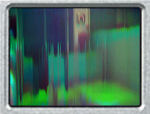 CCD failures: More to the story?
CCD failures: More to the story?
By
Mike Tomkins
(Monday, October 17, 2005 - 10:21 EDT)
Since last week when we published our coverage of the CCD sensor failures disclosed by several digital camera manufacturers, the story has continued to develop.
NOTE: Since this item was published, we have compiled a new and more in depth source of information on this issue. Please consider visiting our article CCD Sensor Problems in Consumer Imaging Products as well as (or instead of) this item!
Three more camera manufacturers have now published service advisories, bringing the total number of companies having taken action to seven. The new advisories from Nikon, Ricoh and Olympus bring the total number of camera models that may potentially fail to 58. Add in the other products using the affected sensors, including digital camcorders, PDA's, and more, and you have a problem that can cause almost 170 unique products sold all over the globe to fail, particularly when used in conditions of high heat and humidity.
Our investigations prior to publishing last week's article pointed to a problem with the epoxy packaging used in the failing image sensors eventually allowing moisture to enter. Subsequently, two other potential sources of problem have come to our attention among a flood of reader emails, however.
An article published by Japan's Nikkei Business Publications agreed that the sensors in question were sourced from fabs operated by Sony Corp., but provided a different reason for the failures. According to Nikkei journalist Naoki Asakawa, the problem was twofold: changed settings on a wire bonding system that provided weaker joints between wires and electrodes, and iodine bonding compound vaporising inside the CCD package where it further decayed the joint surface. Nikkei reports that Sony has removed the iodine compound from its CCD manufacturing process, and says the company also introduced a test for bonding strength in March 2004.
A reader email from Paul Taylor pointed us toward another possibility. We've heard from several readers that they were able to get failing cameras to work again for short periods, either by bumping or flexing the camera chassis. This is obviously something we would recommend against trying, since it could potentially damage other components in your camera and lead to expensive repair bills, but given that little if any force could be transferred through the sensor package by these methods, it does hint at another problem coming into play in at least some cameras. Paul theorises that the zero insertion force (ZIF) connectors and flex cables inside the camera may not be providing sufficiently good contact, and mechanical action on the camera body is moving the cables inside the connectors enough to temporarily improve the situation.
Regardless of whether the problem is one or more of the above, or something else entirely, the important thing to note is that the manufacturers are doing an admirable job of standing behind their products. In every advisory we've seen so far, the company involved states that it will fix the problem regardless of warranty status of the affected cameras. (Obviously costs of unrelated problems being fixed aren't included.) Not only is this good news for customers owning the affected cameras, but it should also bode well for customers buying new cameras today (and as we understand it, current and recent cameras should be unaffected by this problem).
Summing up, the list of camera models known to be affected is:
- Canon:
- PowerShot A60
- PowerShot A70
- PowerShot A75
- PowerShot A300
- PowerShot A310
- PowerShot S230 Digital ELPH / Digital IXUS V3 / IXY D320
- PowerShot SD100 Digital ELPH / Digital IXUS II / IXY Digital 30
- PowerShot SD110 Digital ELPH / Digital IXUS IIs / IXY Digital 30a
- Fujifilm:
- FinePix A303
- FinePix F410 Zoom
- FinePix F700
- FinePix S2 Pro
- Sony:
- Cyber-shot DSC-F717
- Cyber-shot DSC-P10
- Cyber-shot DSC-P12
- Cyber-shot DSC-P2
- Cyber-shot DSC-P31
- Cyber-shot DSC-P32
- Cyber-shot DSC-P51
- Cyber-shot DSC-P52
- Cyber-shot DSC-P7
- Cyber-shot DSC-P71
- Cyber-shot DSC-P72
- Cyber-shot DSC-P8
- Cyber-shot DSC-P92
- Cyber-shot DSC-U10
- Cyber-shot DSC-U20
- Cyber-shot DSC-U30
- Cyber-shot DSC-U60
- Cyber-shot DSC-V1
- CD Mavica MVC-CD250
- CD Mavica MVC-CD400
- CD Mavica MVC-CD500
- FD Mavica MVC-FD100
- FD Mavica MVC-FD200
- Konica Minolta:
(note: all affected models were actually released prior to the merger with Konica, and hence carry only the Minolta brand name) - DiMAGE A1
- DiMAGE 7i
- DiMAGE 7Hi
- DiMAGE Xi
- DiMAGE Xt
- DiMAGE X20
- DiMAGE S414
- DiMAGE F300
- Nikon:
- Coolpix SQ
- Coolpix 3100
- Coolpix 5700
- Ricoh:
- Caplio RR30
- Caplio 300G
- Caplio G3
- Caplio G3 model M
- Caplio G3 model S
- Caplio ProG3
- Caplio G4
- Caplio G4 wide
- Caplio 400G wide
- Caplio RX
- Olympus:
- Camedia C-5050 Zoom
- Camedia C-730 Ultra Zoom
|